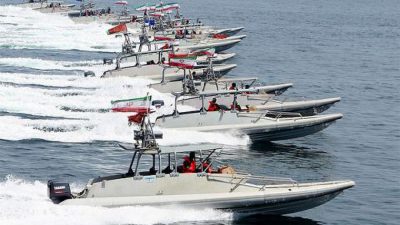Iran Defies American Naval Power

Iran is already beginning to challenge American naval power. The country recently reported on the development of an advanced mapping and communication network for submarines. The network consists of a complex wireless communication system called “Waza” and integrates an entire national defense project: with land and sea forces inferior to those of enemy countries, such as the United States, Iran invests in its submarine power, since it has several different classes, many of which were built by Russia decades ago and are still capable of venturing into distant waters.
However, a new and important step was taken by Tehran in its quest to fortify its maritime and underwater power. A few days ago, Iranian Admiral Hossein Khazandi claimed that his country is seriously considering the possibility of developing nuclear submarines. In his words:
“It would be negligent on the part of Iran not to consider the use of nuclear powered submarines […] So we are thinking about it”.
Iran already has a very well-equipped fleet of several submarines, from small submersibles to some capable of carrying more than 50 crew members and crossing turbulent waters. However, they all use conventional propulsion. Nuclear-powered submarines have better operational capabilities than conventional ones, as they do not need to refuel frequently and can operate autonomously for a longer period of time, explains the admiral. For this reason, the strategic importance of creating nuclear powered submarines must be discussed, as it would take Iranian maritime power to a new international level.
As we can see, there is still no exact definition of what will happen or when Iran intends to start developing such submarines, however, it is an agenda that is gaining more and more strength among the defense sectors of the country. The Iranian admiral said that Tehran has “its own capacity” to build larger vessels than the current light submarines of the Fateh class, which gives Iran greater freedom to proceed with its project, since it apparently does not depend on foreign technological aid.
A curious fact is that this discussion was heightened due to a recent episode in the Persian Gulf through which the world became aware of Iran’s naval potential. On April 15, Iranian Revolutionary Guard military speedboats carried out a series of maneuvers against several American ships that were patrolling the region. “IRGC boats repeatedly passed the bow and stern of American ships at an extremely close distance and at high speed,” says the American report, noting that some have passed within 50 meters of the bow of the expeditionary mobile ship USS Lewis B. Puller and 10 meters from USCGC Maui, the US Coast Guard patrol ship of the Island class. The other American ships surrounded by the naval siege were the USS Paul Hamilton guided-missile destroyer, the USS Firebolt and USS Sirocco patrol ships, and the Coast Guard’s USCGC Wrangell. The Navy notes that these ships participated in operations in international waters with US Army AH-64E Apache attack helicopters.
Western media reacted to Iran’s maneuvers with disapproval and scandal, considering it unacceptable and worthy of sanctions. The US Navy published notes stating that the siege of vessels conducted by the speedboats was extremely irresponsible, disregarding international navigation standards and creating a serious risk of miscalculation, which could result in collisions. However, little or no attention has been paid to the fact that Iran was only responding to foreign occupation in the region. After all, what standard of international law guarantees the US patrol power in the Gulf ensuring that there will be no response from countries in the region? Where does Washington’s international police power come from?
There is a whole context behind the siege conducted by Iran. The US has been conducting military operations in the Persian Gulf since the end of March, with the amphibious assault ship USS Bataan and its attack group arriving on the waterway in early April. The Persian Gulf has become an area of international risk, as it is located between the regional rivals Iran and Saudi Arabia, the latter US ally, and for much of the world’s maritime oil trade to pass through the waterway. As has often been seen over the past few decades, when any regional tension arises between two sovereign National States, the United States sends out highly equipped troops with high destructive power to “guarantee international peace and security”. In fact, there is no interest in peace and security, Washington just wants to protect its interests – which specifically in this region coincide with the Saudi ones – and to that goal it sends its armed forces, but does not like it and reacts with fiery speeches when any other country also aims to guarantee its own interests, opposing to American impositions.
This time, however, the world saw a reaction with equivalent power. Iran surrounded American vessels as a warning to Washington to immediately cease to act as a global maritime police. Gradually, the United States is forced by its own conditions to yield to these reactions, as its strength to guarantee a hegemonic status is crumbling. In other times, Americans would react to Iran by attacking their speedboats and conducting amphibious attack operations, but now they know that they may no longer have the strength to conduct conflicts of this magnitude, so that reacting to Iran would be extremely irresponsible.
Gradually, the sea becomes multipolar.
*
Note to readers: please click the share buttons above or below. Forward this article to your email lists. Crosspost on your blog site, internet forums. etc.
This article was originally published on InfoBrics.
Lucas Leiroz is a research fellow in international at the Federal University of Rio de Janeiro.
Featured image is from InfoBrics

